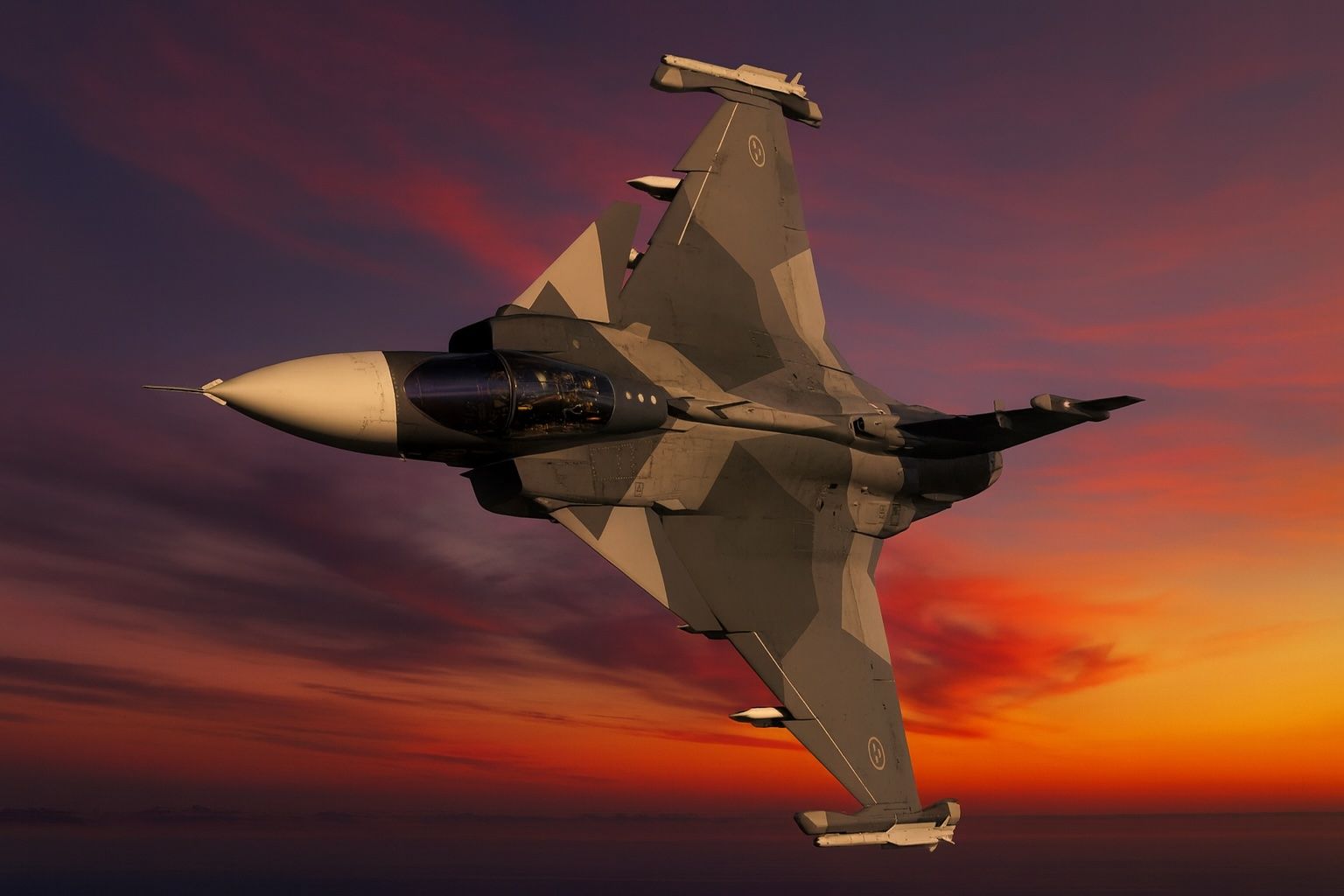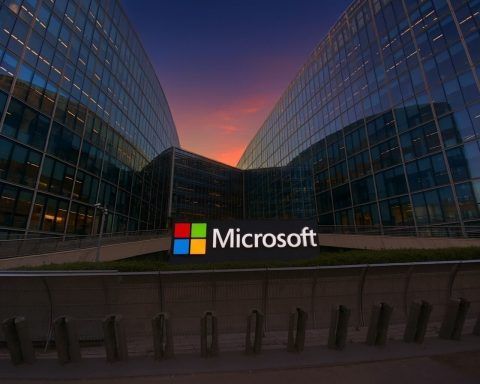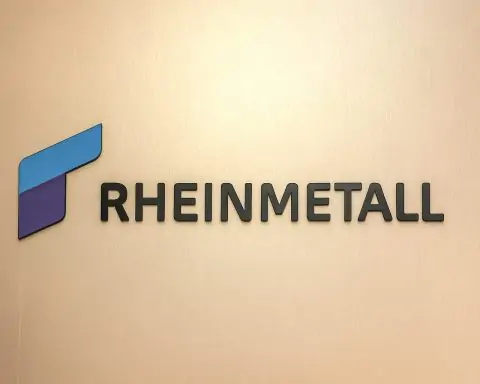OTTAWA — November 18, 2025
Canada’s long‑running fighter jet saga took a dramatic turn today as the federal government signalled fresh interest in Sweden’s Saab Gripen fighter and a Canadian‑built GlobalEye surveillance aircraft — even as the country remains contractually tied to 16 U.S.‑made F‑35s.
Industry Minister Mélanie Joly said Ottawa is “interested” in the Gripen and openly criticized the limited industrial benefits Canada has received so far from its F‑35 deal with Lockheed Martin. At the same time, Saab has stepped up its pitch by offering to build its GlobalEye airborne early warning and control (AEW&C) aircraft entirely in Canada, in partnership with Bombardier. [1]
The announcements come as Sweden’s King Carl XVI Gustaf and Queen Silvia begin a three‑day state visit, during which Canada and Sweden formally launched a new strategic partnership that places defence, trade and Arctic cooperation at its core. [2]
Key points
- Canada is re‑opening the door to Saab’s Gripen fighter jet, despite an existing plan to buy 88 F‑35s. [3]
- Mélanie Joly says Canada “didn’t get enough” industrial benefits from the F‑35 contract and wants more jobs and technology for Canadian industry. [4]
- Saab is offering to build the entire GlobalEye surveillance plane in Canada, in cooperation with Bombardier, claiming thousands of high‑tech jobs. [5]
- A new Canada–Sweden Strategic Partnership signed today formalizes closer ties on defence, security and trade, reinforcing the political context for Saab’s offers. [6]
- Canada remains contractually committed to 16 F‑35s, with the fate of the remaining 72 jets still under review. [7]
Joly puts F‑35 industrial benefits in the crosshairs
Speaking to reporters ahead of a cabinet meeting this morning, Joly said Canada is actively examining Saab’s Gripen offer alongside its existing F‑35 commitments, and made unusually blunt comments about the current deal with Lockheed Martin.
She argued that Canada has not secured enough jobs or industrial work packages from the F‑35 contract and that Canadians “expect more” from such a large defence purchase. [8]
Joly also confirmed that Saab has tabled an offer that includes up to 10,000 Canadian manufacturing jobs tied to a potential Canadian Gripen production line — a figure that has quickly become central to the emerging political debate. [9]
Her comments echo a separate interview reported today in which she said the government believes it “didn’t get enough” industrial benefits from the F‑35 deal and wants to secure more work for Canadian firms, either by extracting better terms from Lockheed Martin or by striking new partnerships with European suppliers like Saab. [10]
How we got here: Canada’s F‑35 plan under review
Canada formally selected the F‑35A as its CF‑18 replacement in 2022 and announced plans to buy 88 aircraft, but so far only 16 jets are under firm contract. [11]
Those 16 aircraft — now in various stages of production — are going ahead. Ottawa has already paid in full for several jets, with deliveries expected to begin at Luke Air Force Base in Arizona next year for pilot training, followed by aircraft arriving in Canada later in the decade. [12]
The larger fleet, however, is no longer a done deal:
- In March 2025, the federal government launched a formal review of the F‑35 program, citing rising trade tensions with the United States and concerns that Canada was not receiving sufficient economic return for its investment. [13]
- In October 2025, Canadian officials confirmed that while the F‑35 program is moving “full steam ahead” for the initial 16 jets, the broader decision on whether to buy all 88 remains under active review. [14]
- Defence procurement officials have said Canada is “contractually obligated” to those 16 aircraft, but free to reconsider its path for the remaining jets. [15]
Against that backdrop, industry analysts have warned that the longer Ottawa delays a final decision, the harder it will be to justify a “mixed fleet” that includes both F‑35s and a European fighter like the Gripen. Training costs, logistics, spare parts and infrastructure all multiply when a military operates multiple combat aircraft types. [16]
Saab’s high‑stakes pitch: Gripen and GlobalEye “made in Canada”
Saab is clearly trying to make that mixed‑fleet option more attractive — and more politically sellable.
10,000 jobs and a Canadian Gripen line
According to Saab and Canadian officials, the Swedish company has proposed licence‑producing the Gripen fighter in Canada, in partnership with Bombardier and other domestic aerospace firms. The plan could create up to 10,000 Canadian jobs in manufacturing, engineering and support, with Canada becoming a potential export hub for Gripen aircraft, including jets destined for Ukraine. [17]
For Ottawa, that offer directly targets one of the most sensitive aspects of the F‑35 debate: industrial offsets. While Canadian companies do participate in the F‑35 supply chain, those contracts are competitive across partner nations and not guaranteed to remain in Canada for the life of the program, making it harder for the government to point to specific, ring‑fenced job numbers. [18]
GlobalEye: a surveillance plane built entirely in Canada
Saab is also pressing its advantage in another major procurement: Canada’s search for an airborne early warning and control (AEW&C) capability.
- In May, Saab formally offered its GlobalEye AEW&C system for Canada’s program, built on a Canadian‑made Bombardier Global 6000/6500 business jet airframe. [19]
- Today, a new report based on an interview with GlobalEye’s senior sales manager says Saab is willing to manufacture the entire GlobalEye aircraft in Canada, including installing its advanced radar and mission systems domestically — an offer that could generate roughly 3,000 Canadian jobs. [20]
The GlobalEye proposal directly leverages Canada’s existing aerospace strengths: Bombardier’s Montreal‑based production lines and a network of high‑tech suppliers around the country. Saab has emphasized that this model would maximize Canadian content while integrating Canadian firms into a global export supply chain for GlobalEye aircraft. [21]
The main rival is Boeing’s E‑7 Wedgetail, already selected by the United States and several NATO allies — a choice that strengthens arguments about interoperability within NORAD and NATO, but offers fewer obvious opportunities for large‑scale production work in Canada itself. [22]
A new Canada–Sweden Strategic Partnership changes the politics
Today’s announcements land during a carefully choreographed state visit by Sweden’s royal couple, accompanied by the country’s deputy prime minister, defence and energy ministers, and one of the largest Swedish business delegations ever to visit Canada. [23]
During the visit, Canada and Sweden signed a Strategic Partnership that will act as a political framework to deepen cooperation across five pillars, including:
- Economic development, trade and investment
- Security, defence and resilience
- Arctic cooperation and “North–North” connections
For Saab, the timing could hardly be better. The company is now able to frame its Gripen and GlobalEye offers not just as commercial bids, but as flagship projects inside a broader Canada–Sweden political and industrial alliance.
For Ottawa, the partnership provides diplomatic cover to explore European alternatives to the F‑35 without formally walking away from the U.S. program — a potentially delicate balancing act at a time of trade tensions and shifting transatlantic politics. [25]
What’s at stake for Canada’s defence and economy
Military capability and NORAD
From a pure capability perspective, defence officials have repeatedly stressed that the F‑35 remains the most advanced fighter on offer, particularly for stealth, long‑range strike and integration with U.S. forces under NORAD. Some military leaders and U.S. diplomats have warned that a mixed fighter fleet could complicate operations and drive up long‑term support costs. [26]
Advocates of the mixed‑fleet approach counter that:
- A combination of F‑35s and a simpler, cheaper fighter like Gripen could spread risk,
- Reduce dependence on a single U.S. supplier, and
- Provide more aircraft in the air for the same budget. [27]
On the surveillance side, GlobalEye would give Canada an AEW&C capability it has never had before, offering long‑range radar coverage over the Arctic, Atlantic and Pacific approaches — a critical need as great‑power competition intensifies in the North. [28]
Jobs, innovation and supply chains
The industrial stakes are equally significant:
- 10,000 potential jobs tied to a Canadian Gripen line would make the program one of the largest aerospace investments in recent Canadian history. [29]
- 3,000 GlobalEye jobs would further anchor Canada’s role as a producer of advanced missionized aircraft, not just “green” airframes. [30]
- Canadian firms could gain long‑term access to export markets for both Gripen and GlobalEye, diversifying away from sole reliance on U.S. programs. [31]
Supporters of sticking with an all‑F‑35 fleet note that Canadian companies have already secured more than a billion dollars in F‑35 related work over the life of the program, and that deeper integration into that supply chain could bring further long‑term benefits. [32]
What happens next?
Today’s signals from Joly and the unveiling of the Canada–Sweden Strategic Partnership make one thing clear: Canada’s fighter and surveillance decisions are no longer just about aircraft performance. They are now tightly bound up with trade policy, industrial strategy and the country’s push to diversify its strategic relationships.
Over the coming months, watch for:
- Cabinet debates over whether to negotiate tougher industrial terms with Lockheed Martin, Saab — or both.
- A formal decision on the remaining 72 F‑35s, which will determine whether the Royal Canadian Air Force ends up with a single‑type or mixed fighter fleet. [33]
- The next steps in Canada’s AEW&C competition, where Saab’s GlobalEye will likely go head‑to‑head with Boeing’s E‑7. [34]
- Further announcements flowing from the new Canada–Sweden Strategic Partnership, particularly on defence industrial cooperation and Arctic security. [35]
For now, Canada is trying to have it both ways: moving ahead with its first batch of F‑35s while keeping the door open to European alternatives that promise more jobs and more autonomy. Whether that balancing act can hold — politically, militarily and economically — is the question that will define Ottawa’s defence policy long after today’s royal visit is over.
References
1. globalnews.ca, 2. www.timescolonist.com, 3. globalnews.ca, 4. globalnews.ca, 5. www.marketscreener.com, 6. www.timescolonist.com, 7. theaviationist.com, 8. globalnews.ca, 9. globalnews.ca, 10. battlefordsnow.com, 11. www.aerotime.aero, 12. theaviationist.com, 13. dsm.forecastinternational.com, 14. www.twz.com, 15. theaviationist.com, 16. www.twz.com, 17. www.reuters.com, 18. theaviationist.com, 19. www.saab.com, 20. www.marketscreener.com, 21. www.saab.com, 22. www.twz.com, 23. www.newswire.ca, 24. www.timescolonist.com, 25. dsm.forecastinternational.com, 26. www.twz.com, 27. www.aerotime.aero, 28. www.saab.com, 29. www.reuters.com, 30. www.marketscreener.com, 31. militarnyi.com, 32. theaviationist.com, 33. theaviationist.com, 34. www.twz.com, 35. www.timescolonist.com










